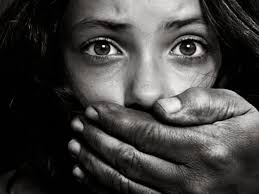
 The State Board of Education has unanimously approved a new rule requiring instruction in child trafficking prevention for students in grades K-12. With this approval, Florida will be the first state in the nation to address the need for instruction in child trafficking prevention. The new rule also establishes procedures for school districts to plan and document delivery of the required instruction.
The State Board of Education has unanimously approved a new rule requiring instruction in child trafficking prevention for students in grades K-12. With this approval, Florida will be the first state in the nation to address the need for instruction in child trafficking prevention. The new rule also establishes procedures for school districts to plan and document delivery of the required instruction.
Florida is third in the nation for numbers of reported cases of human trafficking, and the average age of trafficked youth is 11 to 13 years old. In 2018, there were 767 human trafficking cases reported in Florida. Of those cases, 149 were minors. Up to 70 percent of sex trafficking and exploitation begins with predators connecting with youth online. According to the National Center for Missing and Exploited Children, one out of eight endangered runaway youth is likely a victim of human trafficking.
The new rule requires that by December 1 of each year, each school district must submit an implementation plan to the commissioner and post the plan on the school district website. The implementation plan must include:
· The methods in which instruction will be delivered for each grade level;
· The professional qualifications of the person delivering instruction; and
· A description of the materials and resources utilized to deliver instruction.
· The rule also establishes that every school in Florida be a “Child Trafficking Free Zone.”
Additionally, by July 1 of each year, each school district must submit an annual report to the commissioner to verify completion of the instruction.
“Florida continues to lead the nation in the fight against human trafficking by being the first state in the country to mandate every student in K-12 to receive Child Trafficking Prevention and require every school in the state to declare itself a Child Trafficking Free Zone.” said Geoff Rogers, CEO and co-founder of the U.S. Institute Against Human Trafficking. “We hope more states will follow their lead as we seek to put an end to this terrible crime in the United States.”
While there is no standard profile of a child-trafficking victim, several risk factors indicate that certain children are more susceptible. Reports show that traffickers often target children and youths with a history of sexual abuse, dating violence, low self-esteem and minimal social support.
A safe learning environment is proven to be imperative for overall student success, and this success is threatened when students face exploitation and violence. Training on risk factors for vulnerable children, the signs and indicators of exploitation and trafficking, and the victim-centered approach should be provided to all staff working with students.
The Florida Department of Education provides an array of resources aimed at bringing awareness to human trafficking, including training for educators by the National Human Trafficking Resource Center and the Department of Homeland Security and information on how to report human trafficking. More information can be found athttp://fldoe.org/schools/healthy-schools/human-trafficking.stml.

Be the first to comment